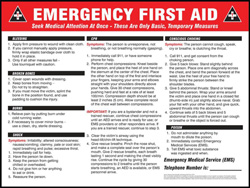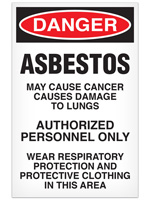| The Home page of ILPI's Safety Data Sheet (SDS) Resource, the leader in SDS information since 1995! | |
| The history and philosophy behind this resource. | |
| A curated collection of books and reference materials concerning Safety Data Sheets and closely related topics. | |
| Paste your plain text SDS into the SDS-Demystifier, and it will be converted into a hypertext-enriched document with links to detailed explanations of each key term. | |
| An extensive list of frequently asked questions about Safety Data Sheets including regulations, content, compliance, and more. | |
| A humorous take on Safety Data Sheet jargon. Fill in the blanks on our entry form to generate a personalized Unsafety Data Sheet to share with your coworkers. | |
| Since 1995, we've maintained this massive curated list of the best places to find Safety Data Sheets on the Internet. | |
| You are here! Way more than a glossary, this hypertext-enhanced resource covers hundreds of SDS-related terms and expert knowledge. Each entry includes both the SDS relevance and links to additional authoritative resources. | |
| Archived results of Safety Data Sheet related polls taken by some of our millions of site visitors | |
| The OSHA regulations behind SDS regulations, including the inspection guidelines and over 400 official interpretations letters under the Hazard Communication Standard | |
| Commercial suppliers of SDS authoring and management software as well as cloud compliance services. | |
| Commercial companies that will create SDS's for your specific needs as well as SDS translation companies. |

Safety signs, banners, and scoreboards? Get yours at Safety Emporium!
Definition
A malignancy refers to a cell or tumor that is growing in an uncontrolled fashion and is threatening to life (in other words, cancer, or "malignant tumor").
Malignancies have a tendency to metastasize (spread to other parts of the body) easily, making the treatment difficult and resulting in poorer chances for survival.
A tumor that is NOT malignant is called benign or non-malignant.
Additional Info
There are many risk factors for cancer and it has many causes. Some of these are known, and many more aren't. At least one out of four people will develop some form of cancer during their lifetime, some of the most common ones being prostate cancer and non-malignant skin cancers.

We have all kinds of first aid signs, posters and labels at Safety Emporium.
According to a study in Pharm Res 2008, 25(9), pp 2097-2116, "Cancer is a Preventable Disease that Requires Major Lifestyle Changes, "Only 5-10% of all cancer cases can be attributed to genetic defects, whereas the remaining 90-95% have their roots in the environment and lifestyle. The lifestyle factors include cigarette smoking, diet (fried foods, red meat), alcohol, sun exposure, environmental pollutants, infections, stress, obesity, and physical inactivity. The evidence indicates that of all cancer-related deaths, almost 25-30% are due to tobacco, as many as 30- 35% are linked to diet, about 15-20% are due to infections, and the remaining percentage are due to other factors like radiation, stress, physical activity, environmental pollutants etc.
How serious of a hazard is carcinogen exposure at work? According to an editorial in Ind Health. 2015, 53(4), pp 307-309, "Eliminating occupational cancer", the ILO estimates that occupational exposures cause 5.3 to 8.4% of all cancers, with the 10 most important occupational carcinogens counting for around 85% of all occupational deaths. According to these statistics, you are more likely to die from occupational cancer than by a workplace accident! However, these statistics are probably skewed by a significant number of people who were exposed to asbestos, a substance that has since been eliminated from the vast majority of workplaces.
Regardless, the single best prevention for cancer is to not use tobacco products. Of course, there are many other components to a healthy life style that reduce your risk of cancer such as proper diet and exercise.
SDS Relevance
If the Safety Data Sheet says that a substance can cause malignancies, treat it with the utmost care and respect. Malignant cancers are ultimately fatal in the vast majority of cases, although great advances in cancer therapy are being made every day.
Avoid the use of the material if at all possible, especially if you have other risk factors for a particular kind of cancer (family history, being overweight, smoking etc.). Consider replacing the material with one that is not carcinogenic; there are often other available alternatives that work just as well.
If you must use the material, utilize proper engineering controls such as a fume hood or other local exhaust ventilation as well as proper personal protective equipment such as gloves and respirators.
Further Reading

Signs, training materials and supplies from Safety Emporium can help ensure a safe and healthy workplace.
- Occupational Cancer at the Canadian Centre for Occupational Health & Safety.
- Occupational Cancer at the US CDC.
- NIOSH maintains an list of substances considered to be potential occupational carcinogens.
- Cancer (Malignant Tumor) at MedicineNet.
- Cancer (Malignancy), focusing on female cancers, at GYNOB.com, courtesy of the Internet Wayback Machine.
- Skin Cancer at eMedicineHealth.
- The National Cancer Institute (U.S. National Institutes of Health).
- Types of Cells and Cancer and How a Cancer Spreads at Cancer Research UK.
- The American Cancer Society home page.
See also: carcinogen, cytotoxin, carcinoma, metastasis.